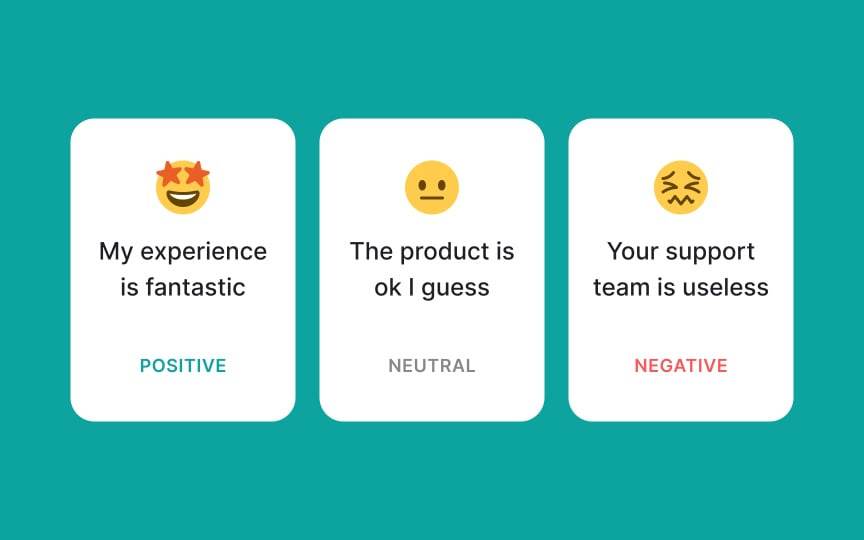Sentiment tracking
Sentiment tracking analyzes customer emotions and attitudes through their interactions with your product. Modern sentiment analysis tools process text from multiple channels — support tickets, chat logs, social media mentions, and product reviews — using natural language processing to categorize feedback as positive, negative, or neutral. This automated analysis reveals emotional patterns that traditional metrics might miss.
Machine learning algorithms go beyond basic sentiment classification to identify specific themes and emotions. They detect frustration, delight, confusion, or appreciation in customer communications, providing nuanced insight into the emotional journey. Advanced systems can even track sentiment changes over time, showing how customer attitudes evolve through different product experiences.
Real-time sentiment tracking enables immediate response to customer dissatisfaction. By monitoring sentiment across channels, teams can quickly identify and address emerging issues before they escalate. The technology also helps prioritize product improvements by highlighting features that consistently generate positive or negative emotional responses.
Pro Tip: Combine sentiment tracking with customer journey mapping to identify emotional highs and lows throughout the user experience.

